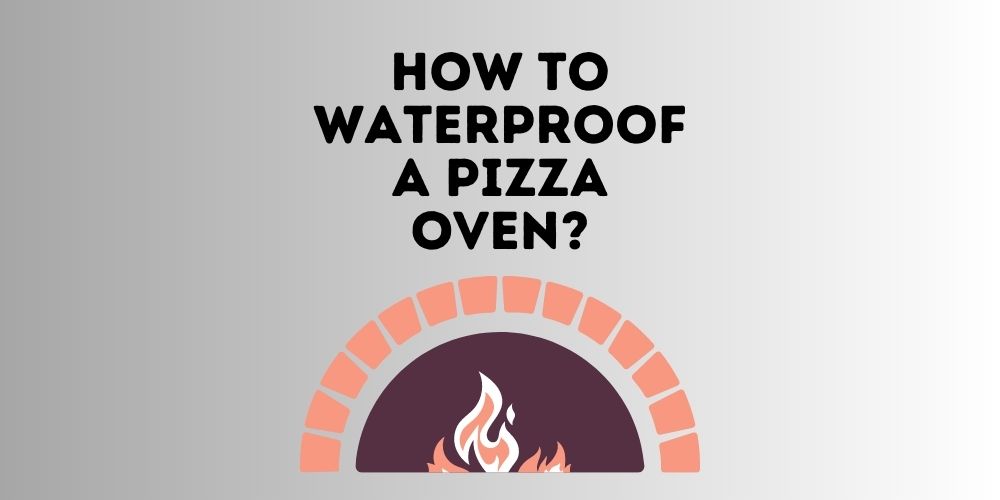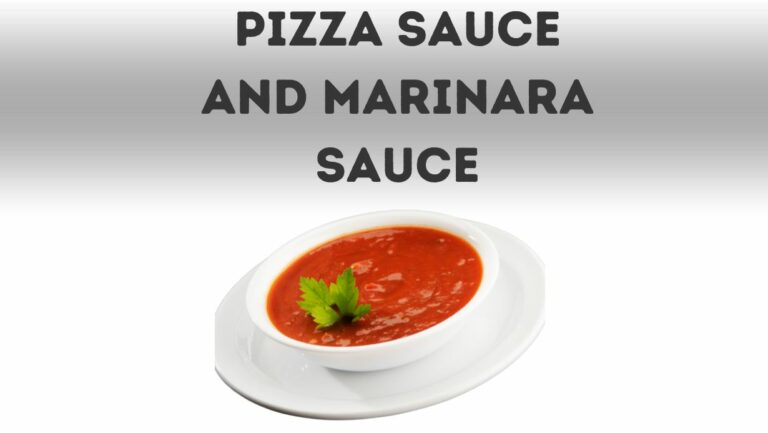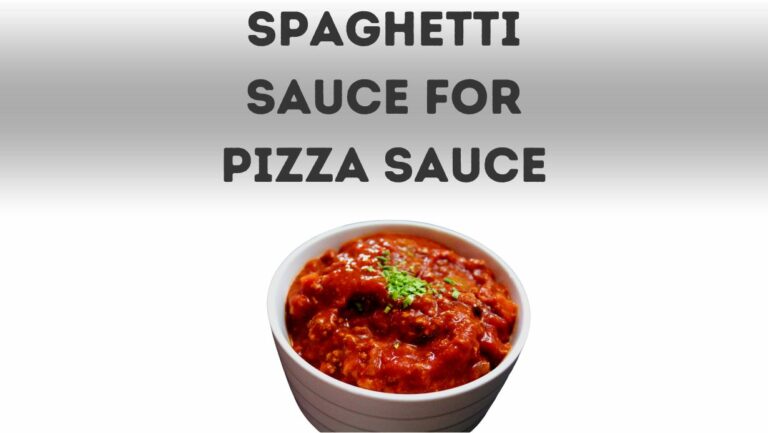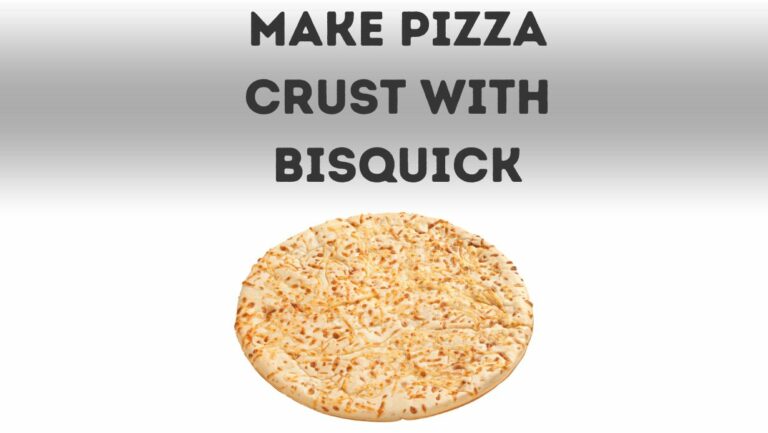
Waterproof A Pizza Oven
They offer an efficient and fun way to cook delicious pizzas, bread, and other baked goods. However, pizza ovens are exposed to the elements, which can cause significant damage over time.
One of the most critical steps in protecting your pizza oven is waterproofing it. In this blog post, we will explore the importance of waterproofing your pizza oven, the consequences of not doing so, and how to protect your pizza oven from the elements.
Whether you are a professional chef or a pizza enthusiast, understanding the importance of waterproofing your pizza oven is crucial to its longevity and functionality. So let’s dive in and learn how to keep your pizza oven in top shape for years to come.
Determine the Best Waterproofing Method

When it comes to waterproofing your pizza oven, there are several methods to choose from. Each method has its own set of advantages and disadvantages, so it’s important to consider which one is the best fit for your needs. In this section, we will discuss the most common waterproofing methods and their pros and cons.
- Sealers: Sealers are the most basic type of waterproofing material. They are easy to apply and affordable, making them a popular choice for many homeowners. Sealers create a protective layer on the surface of the oven, preventing water from penetrating. However, they are not as durable as other methods and may need to be reapplied frequently.
- Coatings: Coatings are thicker than sealers and provide more durable protection. They come in a variety of types, including acrylic, epoxy, and urethane. Coatings are ideal for pizza ovens that are exposed to harsh weather conditions. However, they are more expensive and require more effort to apply than sealers.
- Membranes: Membranes are the most effective waterproofing method for pizza ovens. They are made of rubber or polymer and provide a completely waterproof barrier. Membranes are best suited for larger pizza ovens or those that are frequently exposed to water. However, they are the most expensive and difficult to apply of all the methods.
Based on factors like cost, durability, and ease of application, we recommend using coatings as the best method for waterproofing your pizza oven. Coatings provide a balance between affordability and durability and are relatively easy to apply. However, if you have a larger oven or are frequently exposed to water, membranes may be a better choice despite their higher cost and difficulty of application.
Ultimately, the best waterproofing method will depend on your specific needs and the conditions your pizza oven is exposed to. By considering the pros and cons of each method, you can make an informed decision and ensure your pizza oven is protected from water damage.
Preparing the Pizza Oven
Before waterproofing your pizza oven, it’s essential to prepare it adequately. This will ensure that the waterproofing material adheres correctly and creates a durable barrier. Here are some steps to follow when preparing your pizza oven for waterproofing:
- Clean the Pizza Oven Thoroughly: The first step is to clean your pizza oven thoroughly. This involves removing any debris, soot, or residue that may have accumulated over time. You can use a brush or scraper to remove any loose materials, followed by a damp cloth to wipe down the surfaces. It’s essential to ensure that the oven is completely dry before proceeding to the next step.
- Inspect the Oven for Cracks, Holes, and Other Damages: Next, inspect the pizza oven for any damages. Look for cracks, holes, or other damages that could compromise the integrity of the oven. Pay close attention to the chimney, door, and other areas where moisture can enter the oven.
- Repair Any Damages Before Waterproofing: If you find any damages during the inspection, it’s crucial to repair them before applying the waterproofing material. You can use refractory cement or mortar to fill in any cracks or holes. Follow the manufacturer’s instructions carefully to ensure that the repairs are done correctly.
By following these steps, you can ensure that your pizza oven is ready for waterproofing. Taking the time to prepare the oven adequately will help ensure that the waterproofing material adheres correctly and provides maximum protection against the elements.
Applying the Waterproofing Material
Once you have determined the best waterproofing method for your pizza oven, it’s time to apply the chosen waterproofing material. Follow these step-by-step instructions to achieve the best results:
Step 1: Wear Protective Gear
Before starting the application process, wear protective gear, including gloves and a mask, to protect yourself from the chemicals in the waterproofing material.
Step 2: Prepare the Waterproofing Material
Follow the manufacturer’s instructions to prepare the waterproofing material. Some materials may require mixing with water, while others are ready to use straight out of the container.
Step 3: Apply the Waterproofing Material
Using a paintbrush, roller, or sprayer, apply the waterproofing material evenly to the pizza oven’s surface. Be sure to cover all areas thoroughly, including corners, edges, and any cracks or crevices. Avoid applying too much material in one area, as this can lead to uneven coverage and pooling.
Step 4: Achieve an Even and Smooth Coverage
To achieve an even and smooth coverage, apply the waterproofing material in thin layers. Allow each layer to dry completely before applying the next. This approach will help you avoid clumping and unevenness in your application.
Step 5: Allow the Material to Dry
Allow the waterproofing material to dry completely according to the manufacturer’s instructions. This typically takes a few hours to a day, depending on the type of material and the weather conditions.
Step 6: Cure the Waterproofing Material
After the material has dried, it’s time to cure it. Curing time varies depending on the type of material, but it typically takes a few days. During this time, keep the pizza oven dry and avoid using it.
By following these steps, you can achieve a durable and effective waterproofing layer for your pizza oven. Remember to always read and follow the manufacturer’s instructions for best results.
Additional Tips
After you have successfully waterproofed your pizza oven, it is essential to maintain its water-resistance properties. Below are some tips to help you maintain the waterproofing:
- Regular Cleaning: To maintain your pizza oven’s waterproofing, you should keep it clean and dry at all times. Moisture can seep into the cracks, damaging the waterproofing material. Clean the oven regularly to remove any debris or dirt that can hold moisture.
- Protect the Pizza Oven: Another way to maintain the waterproofing of your pizza oven is to protect it from the elements. Cover the oven when not in use or during rainy or snowy weather. A cover will prevent water from seeping into the oven, and it will also protect it from dust and debris.
- Inspections and Maintenance: Regular inspections are crucial to maintaining the waterproofing of your pizza oven. Periodically inspect the oven for any signs of damage or cracks in the waterproofing material. Repair any damages as soon as possible to avoid more significant problems down the road.
- Refrain from using abrasive materials: When cleaning the pizza oven, avoid using abrasive materials or harsh chemicals as they can damage the waterproofing material. Instead, use gentle cleaning materials and techniques that will not damage the waterproofing.
However, maintaining your pizza oven’s waterproofing is just as crucial as waterproofing it in the first place. Follow these tips to keep your pizza oven clean, dry, and protected from the elements. Regular maintenance and inspections will prolong the life of your pizza oven and ensure that it continues to function correctly for years to come.
FAQs on Waterproofing Pizza Ovens
What is the best sealer for pizza oven?
If you are looking for a sealer to protect your pizza oven from water damage, we recommend using Bondall Natural Finish Sealer or any concrete water sealer. These sealers will help to seal, waterproof, and bind the render on the pizza oven.
How do I protect my pizza oven?
To protect your pizza oven, we recommend covering it when it’s not in use to prevent moisture damage. Your oven should also be covered during any rain or snow. By using a protective cover for your outdoor oven, you can prevent cracks, water damage, and UV deterioration.
What should I put under my pizza oven?
Supports for your outdoor pizza oven can be made of concrete, breeze blocks, house bricks, or even old railway sleepers, but they must be strong and level, as the oven is going to be heavy. If you are using bricks or breeze blocks, connect them together using cement.
What is a good waterproof sealer for wood?
If you have a wood-fired pizza oven or if your pizza oven has a wooden base, it’s important to use a waterproof sealer to protect it from water damage. Some good waterproof sealers for wood include Thompson’s Water Seal, Rainguard Premium Wood Sealer, and DEFY Crystal Clear Sealer.
Final Thoughts on Waterproof A Pizza Oven
Waterproofing your pizza oven is an essential step to protect it from water damage caused by rain, snow, and humidity. Moisture can seep into the oven and cause cracks, mold, and other damage that can affect the oven’s performance and durability. By waterproofing your pizza oven, you can prolong its lifespan and ensure it continues to produce delicious, crispy pizzas for years to come.
The benefits of waterproofing your pizza oven include protecting your investment, preventing the need for costly repairs, and maintaining the quality of your cooking. Additionally, by taking care of your pizza oven, you can enjoy it for years to come, creating unforgettable moments with family and friends.
Therefore, we encourage all pizza oven owners to take action and waterproof their pizza ovens today. By following the tips and methods discussed in this post, you can effectively waterproof your pizza oven and enjoy the delicious pizza it produces, knowing that it’s protected from the elements. So, don’t wait any longer, take the necessary steps to protect your pizza oven today!

Handsomepizza.com is the brainchild of two pizza-obsessed friends who wanted to share their love of pizza. We are dedicated to bringing you the latest news, reviews, and insights on pizza.







